

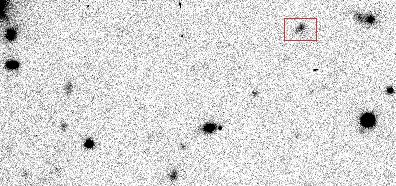
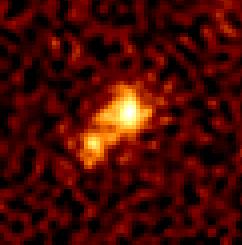 The binary Kuiper Belt Object 1998 WW31 - Chapter 1
The binary Kuiper Belt Object 1998 WW31 - Chapter 1
1998 WW31 is a double TNO!...
C. Veillet - CFHT
2001 April 14
| Back to the 1998WW31 story |
| Recovery | Detection of the possible pair | Processed image | Raw images | Image quality check | Astrometry |
| Archive | Processed image | Raw images | Astrometry |
| IAUC
7610
S/2000 (1998 WW_31) 1
Reprinted by authorization of the CBAT |
 |
 |
 |
The TNO has moved by around 48" between images
1 and 2, and 5" between images 2 and 3.
Processed
images (CFH12K
images)
|
(2000 Dec. 22/23) |
(2000 Jan. 6) |
 |
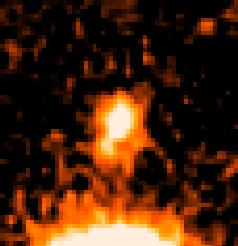 |
|
Position angle: +45 deg. one 8mn and two 10 mn exposures |
Position angle: +25 deg. two 8mn exposures |
With the recovery data only:
- Two TNO's could be on different orbits, with apparent motions close enough to be indistinguishable over one day, and be 1.2" apart on these two nights. Unlikely, but there are even less probable coincidences happening!
- 1998 WW31 could be a double TNO (like Pluto-Charon). The distance between the two components would then be ~40,000 km (if at elongation).
Using the archive data...
- 1998 WW31 is definitely elongated (and even seen double on an image). Position angle and estimated distance between the two components have changed... 1998 WW31 is a double asteroid!
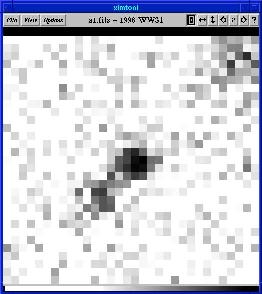 |
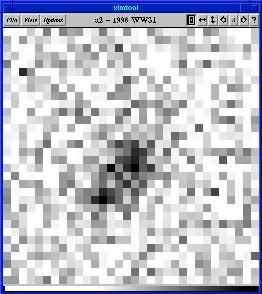 |
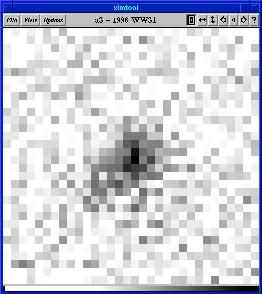 |
|
|
|
|
On I1, the TNO is clearly seen as two objects.
On the following night, the image is still seen
as double on 2, and elongated on 3.
No apparent change in position angle in one day
(data not good enough to detect a significant one).
2000 01 07.3
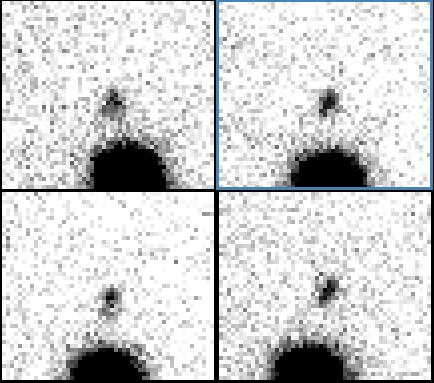 |
|
over 1.2 hr |
2000 01 06.3
On the three images of that night, 1998 WW31 is embedded in the halo
of a very bright star.
More processing will be needed to extract quantitative measurements.
However, the TNO
is elongated in a similar way as on the following night.
 |
|
It is however clearly elongated like on the next night. |
1/ fwhm of a sample of stars around
Image 1 - fwhm = 0.70"
Image 2 - fwhm = 1.10"
Image 3 - fwhm = 0.94"
2/ Contour maps of a nearby star (for possible
telescope tracking and oscillation problems)
 |
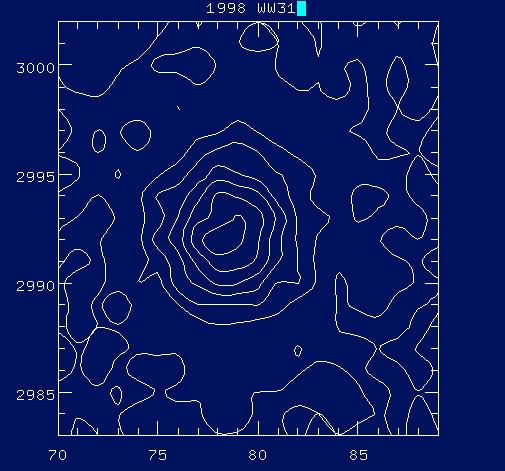 |
 |
J98W31W C2000
12 22.41014 03 28 34.73 +19 07 25.6
568
J98W31W C2000
12 23.34323 03 28 31.48 +19 07 12.3
568
J98W31W C2000
12 23.43105 03 28 31.14 +19 07 11.1
568
J98W31W C2000
01 06.33309 03 23 09.10 +18 55 31.9
568
J98W31W C2000
01 07.27523 03 23 06.76 +18 55 22.0
568
J98W31W C2000
01 07.29704 03 23 06.70 +18 55 21.7
568
J98W31W C2000
01 07.30363 03 23 06.69 +18 55 21.5
568
J98W31W C2000
01 07.32440 03 23 06.63 +18 55 21.2
568
Observations:
J98W31W* C1998 11 18.21509 03 21 32.64
+18 59 07.3 22.6
R 695
J98W31W C1998 11 18.37940 03 21
31.90 +18 59 04.6
695
J98W31W C1998 11 18.45365 03 21
31.53 +18 59 03.2
695
J98W31W C1998 12 18.06375 03 19
25.75 +18 50 26.5
23.4 R 950
J98W31W C1998 12 18.10505 03 19
25.63 +18 50 25.4
950
J98W31W C1998 12 18.14633 03 19
25.49 +18 50 24.1
950
J98W31W C1999 01 14.13690 03 18
10.23 +18 44 50.3
23.3 R 695
J98W31W C1999 01 14.25171 03 18
10.01 +18 44 49.2
695
Observer details:
695 Kitt Peak. Observers R. L. Millis, M. W. Buie, R. M.
Wagner, J. L.
Elliot, D. W. Willmarth, P. S. Smith, D. L.
Harmer, A. Saha. Measurers
M. W. Buie, R. L. Millis, J. L. Elliot.
4-m reflector + CCD, 3.6-m
WIYN Telescope + CCD.
950 La Palma. Observers M. J. Holman, T. Grav. 2.6-m
Nordic Optical
Telescope + CCD.